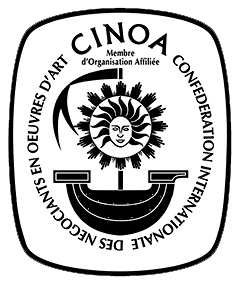Aernout Smit, 'Dutch ships at the Cape of Good Hope'
Global shipping available
- Origin
- Aernout Smit (Amsterdam 1640 - 1710)
- Period
- 17th century
- Material
- Oil on canvas
- Height
- 45.7 cm
- Width
- 61.2 cm
- Literature
Included in: G. de Beer, Ludolf Bachkuysen (1630 - 1708), sein Leben und Werk, Zwolle 2002, p. 47.
Questions about this object?
Please use one of the contact options below:
Description
This dynamic painting shows several Dutch ships off a rocky coast in very turbulent waters. It is possible that the rocky coast of the Cape of Good Hope is depicted here. Another possible location is the Shakespeare Cliff at Dover. The work is signed by Aernout Smit (1640 - 1710) on the piece of driftwood protruding from the water in the bottom right. The signature includes the initials A.S. with, most likely, a date behind it. In this painting, Smit demonstrates his skill as a painter. The threatening grey sky, high waves with splashing foam and the rocky coast have been painted very convincingly. The great contrasts in light and dark bring out the drama in the picture.
Aernout Smit was an Amsterdam-based painter of marines. He was trained by Jan Theunisz Blankerhoff, a marine painter from Alkmaar who worked for several years in Amsterdam. Smit is first mentioned in documents of the art dealer Laurens Cornelisz Conincks, with whom he is said to have rented an attic room to paint. During his life in Amsterdam, Smit lived on Prinsengracht, on Reestraat and at the time of his death on Vijzelstraat at the corner of Kerkstraat. He was married to Marretje Jans, who had a grocery business. In his marriage papers he claimed to be a sailor, but there is no evidence for this.
Between 1667 and 1710, Smit was active as a painter; in 1688 he was registered with Amsterdam's St Luke's guild. His oeuvre consists mainly of marine paintings, but he also painted some landscapes and beach scenes. His style was largely influenced by Ludolf Bakhuizen, after whose work he even made copies to order. Over the years, art historians have changed attributions from Bakhuizen to Smit more than once. Smit painted several variants of this scene. A similar painting can be found in the Staatliches Museum Schwerin. This picture was possibly inspired by some works of Ludolf Bakhuizen from the years 1660-63.









